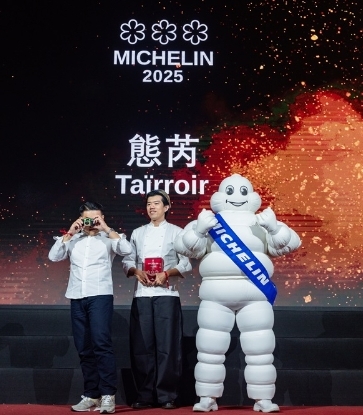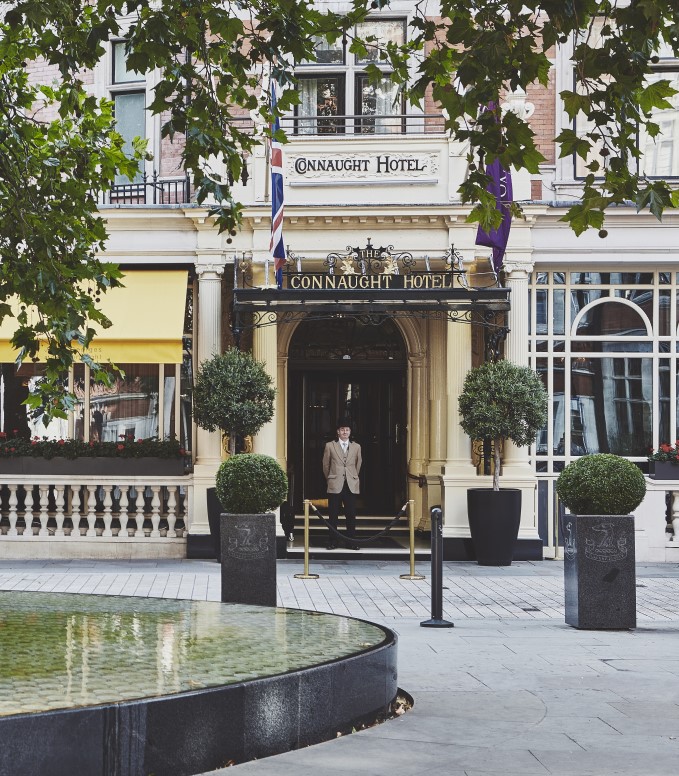A cuisine is the summation of the natural landscape of any given region and the wisdom of its inhabitants. Cooking and dining etiquettes, and the resulting dishes and flavour profiles, may vary from a locality to another. Nevertheless, we can often spot common ground between different cuisines as well. Such dynamics played out wonderfully in a recent trip of chef Chudaree “Tam” Debhakam, who helms of the Two-MICHELIN-starred restaurant Baan Tepa in Bangkok's trip to Taiwan. Upon the invitation of chef Kai Ho from Three-MICHELIN-starred restaurant Taïrroir, she embarked on a journey to Taiwan and discovered a culture centred around time-honoured food traditions.
RELATED: A Love Letter to the Land: Chef Kai Ho of the World’s First 3-Star Taiwanese Restaurant Taïrroir

Debhakam travelled around Taipei and Taichung in her first visit to the island. Both cities boast a blend of historical and modern charm, which is reflected not only in the many landmarks, but also restaurants serving various local favourites. The Thai chef especially took a deep dive into the culture of "lu", or "braising", one of the pillars of Taiwanese cooking.
RELATED: Eat Taiwanese Across The World

A good chunk of iconic Taiwanese dishes is the result of the braising process: lu rou fan (braised pork rice), beef noodle soup, braised pork trotters and lu wei, an assortment of items braised in master stock. To local cooks, the technique is much more than a fixed formula. Every household has its own blend of spices, sauces and medicinal herbs as the backbone of the stock, to which meat and vegetables are added. The food can be served hot or chilled, as a main or a side. The possibilities are endless.

Ho and Debhakam first popped by MAY-DONG Traditional Handmade Sauces to learn more about soy sauce, the cornerstone of flavourful braising stock. MAY-DONG has almost a hundred years of history and is now run by the third-generation owner Fu Hung-yen. Its sauces are made via an ancient fermentation process. After soaking and steaming, the local soybeans get fermented twice in a ceramic vat – a key step in the whole procedure. As soy sauce emerges from the vessel, it is transferred to an oak barrel and boiled over a flame sustained by lychee wood to eliminate any bacteria.
Fu noted they insist on carrying on the ancient production method, rather than appealing to market demand which prefers high intensity in colour and taste. The final product caters to those who can savour the complexity behind the sauce.
RELATED: The Many Lives of Three Cup Chicken, a Taiwanese Classic

The duo’s next stop was Ke Kou Beef Noodles. The noodle shop’s chef Wu Meng-hsueh and his wife Kao Ming-husan pride themselves on their unique braised beef noodle soup recipe. The primary ingredients behind the stock are soy sauce, sugar, fermented bean paste and Chinese medicinal herbs. Fragrant with mild medicinal qualities, the latter is a special blend developed by Wu’s brother, a Traditional Chinese Medicine practitioner.
Another bestseller at Ke Kou Beef Noodles is a full array of master stock-braised side dishes. Inside the master stock are sugar, star anise, soy sauce and other sauces. The ingredients are first blanched and then submerged in the stock overnight to preserve their springy texture. Further to that, every item is prepared separately to avoid different flavours getting muddled in the stock.
RELATED: Taiwan's Must-Eat Beef Noodle Bowls

Heading northwards, Ho and Debhakam continued their survey of exceptional braised foods in Taipei. Situated inside Huaxi Street Night Market, Bib Gourmand awardee Wang’s Broth is well-known for its lu rou fan(braised pork rice). The “black gold” pork sauce is made with pork neckand fatback. The meat is blanched then braised in a stock that contains a special ingredient: shrimp tail, as it adds some marine umami into the liquid.
Braised Cabbage is the signature dish of Mao Yuan, another restaurant that make the Bib Gourmand selection. The simple vegetable is elevated by a lengthy cooking process. It is braised with water, soy sauce and various types of seafood velveted in oil ahead of time. That is why the dish is bursting with the sweetness from the garden and the sea, and why it is always one of the first tasks of the cooks’ daily agenda.
RELATED: Mao Yuan: A Slice of Quotidian Taiwan

At the end of the trip, the two chefs got back to Taïrrior’s kitchen. The knowledge they gleaned from all the braised food specialists along the way became the inspiration behind their new culinary creations. Debhakam prepared a traditional Thai dish called palo. A paste made of blended coriander root, garlic and chili is fried in lard and mixed with soy sauce. Pork belly is then added to the braising stock. With the meat on a gentle simmer, the duo geeked out over the etymology of the dish name – would the “lo” in palo be derived from the word for braising in Hokkien?
Meanwhile, Ho found a way to reinvent the classic Taiwanese lu rou fan(braised pork rice). He first caramelised Taiwan shallot in lard, then added rice and water, cooking the rice until it got crispy at the bottom, in a similar way to paella or Hong Kong style claypot rice. It is served with braising sauce-infused, crispy lard and braising sauce. The two dishes reflect different approaches to the same cooking technique, yet are complementary to one another. That very much showcases the diversity and allure of braising.
The article is written by The MICHELIN Guide and translated by Vincent Leung. Read the original article here.


















